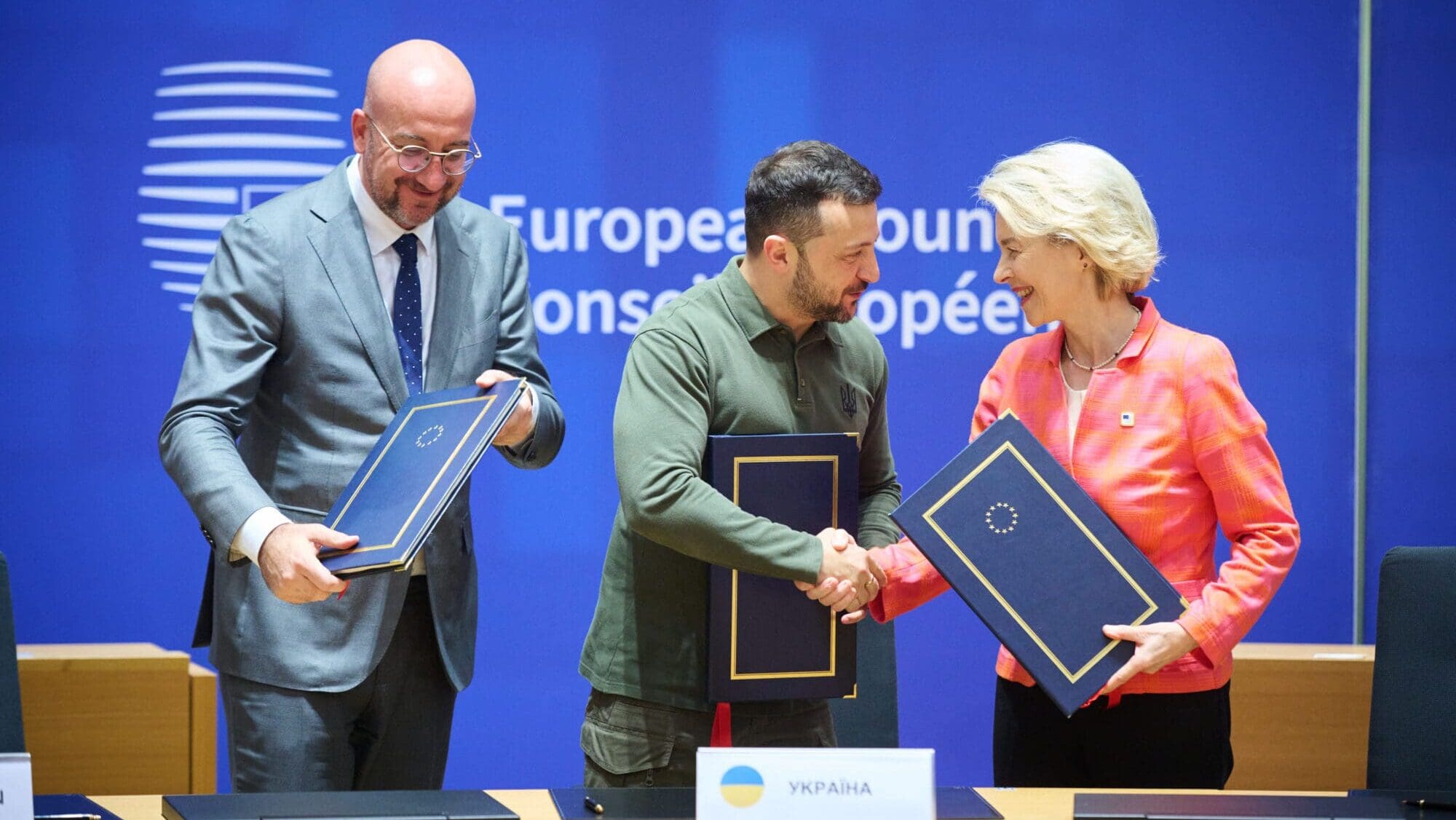
From left to right: European Council President Charles Michel, Ukrainian President Volodymyr Zelensky, and European Commission President Ursula von der Leyen in Brussels, June 27th.
Copyright: European Union, 2024
The representatives of member states in the European Council have authorized the first regular payment under the €50 billion Ukraine Peace Facility adopted earlier this year. On Tuesday, August 6th, they instructed the European Commission to disburse the now-allocated €4.2 billion “as soon as possible.”
The decision was adopted following an official Council assessment. It found that Ukraine had satisfied the necessary conditions and reforms envisaged under the ‘Ukraine Plan’—Kyiv’s roadmap for a gradual “recovery, reconstruction, and modernization” of the country that it submitted to Brussels half a year ago.
Out of the €50 billion aid package, €32 billion was explicitly set aside to support the reforms and investments set out in the Ukraine Plan. Echoing global management speak, the gradual disbursement of these funds is linked to the delivery of identified indicators that attest to the necessary preconditions being met in time.
The remaining €18 billion in aid under the Facility is made up of certain emergency payment structures that can be disbursed with slightly less red tape, to help the Ukrainian state stay afloat. From this, Kyiv already received €6 billion in “bridge financing” and €1.9 billion “pre-financing” after the fulfillment of minimal policy obligations.
Today, the Council greenlighted the first regular payment under the #UkraineFacility.
— EU Council (@EUCouncil) August 6, 2024
Ukraine will receive an additional €4.2 billion to support its macro-financial stability and the functioning of its public administration.
More ⬇️#StandWithUkraine
Readers may recall that approving the Ukraine Facility—the EU’s largest single aid package so far—required several rounds of negotiations between member states, as many requested that the Commission come up with ways to ensure that the funds will be used as intended, and not get lost in the sometimes notoriously corrupt Ukrainian bureaucracy.
For instance, the conditions agreed upon by the European Council—as insisted on by Hungarian PM Viktor Orbán in exchange for dropping his veto—included an annual report by the Commission on the implementation of the program and its funds; a special summit to debate the state of implementation at the mid-point of the four-year financing scheme; and the possibility that the Council request a formal review of this instrument if said debate deems it necessary.
The Ukraine Plan, furthermore, needed to be based on a comprehensive analysis covering the impact of the war, the macroeconomic outlook for the country, and challenges linked to economic recovery, reconstruction, and modernization, including the need for external funding and an increased labor force, as well as transparency and accountability at all stages.
According to the Council’s press release, if all proposed reforms of the Ukraine plan are fully implemented, the country’s GDP is estimated to increase by 6.2% by 2027 and 14.2% by 2040, while reducing its public debt by about 10% by 2030.
Kyiv submitted the plan for consideration in March 2024 and received the Council’s approval of it on May 14th. Still, approving the first regular payment took another two and a half months, and there is no exact date given for the disbursement yet other than “as soon as possible.”
Intended to send aid regularly throughout the next four years, the mechanisms of the Ukraine Facility seem designed in such a way as to guarantee an impractical and drawn-out implementation process.
